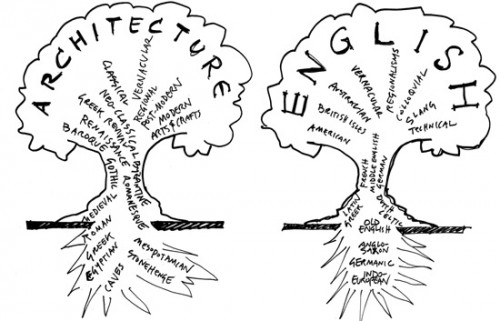Strategies for Teaching Difficult Vocabulary. Part two.
Jose Tena Villada Another area that can be exploited to teach, or rather, develop vocabulary is the explicit analysis of word structure. In many cases, a word must be broke down in order to identify it. In order to do this, learners must develop skills that allow them to do so. This means learners learn to identify roots, inflectional endings, affixes, compound words as well as contractions. If they can identify the meaningful parts of a word, they can get to the unknown parts. The application of this knowledge also leads to the determination of the grammatical function of the word and, eventually, to the meaning of whole sentences.
Another area that can be exploited to teach, or rather, develop vocabulary is the explicit analysis of word structure. In many cases, a word must be broke down in order to identify it. In order to do this, learners must develop skills that allow them to do so. This means learners learn to identify roots, inflectional endings, affixes, compound words as well as contractions. If they can identify the meaningful parts of a word, they can get to the unknown parts. The application of this knowledge also leads to the determination of the grammatical function of the word and, eventually, to the meaning of whole sentences.
Among the Indo-European languages there are some 50 – 80 productive roots and when these are combined with 50 to 80 prefixes the result is several thousand high frequency words. This is due to the fact that English possesses a prefix-root combination word structure, which can be traced back to Greek and Latin.
The first step then is to make learners aware of affixes with words they already know. For example, enjoy can be changed by adding –ment, -able, or –ably. These types of tasks boost student’s comprehension by enabling them to recognize familiar elements within words.
As an example, new words can be introduced by using familiar words in the following manner:
- He is kind and we appreciate his kindness and goodness.
- Schools educate. They provide education.
- There is dirt on the floor. The floor is dirty.
- He is careful. He works carefully.
Another way to develop awareness is by providing the intrinsic meaning of prefixes. As an example:
One of the listed words is needed for completing each sentence. The underlined prefix will tell you which word is needed. The first sentence serves as an example.
Across, again, poorly, before, below.
- A subway does not go above a city; it goes below.
- Maladjusted people are people who adjust________.
- A transatlantic flight goes ___________the Atlantic.
- A prefix is a word-part that comes _____________.
- When we rewrite something, we write it _____________.
- A subnormal temperature is not above normal, it is ___________
- To prearrange something is to arrange it in advance, or _____________.
- To recopy a composition is to copy it ______________.
Another extension of this exercise is to give groups of words that have the same root and provide sentences with gaps where only one of the words belongs in the blank. As an example we may have the words depend, dependable and dependably in a sentence like: Their new helper is very __________.
By stressing activities that relate to new words or forms to words that are known, learners are able to expand their vocabulary by discovering meanings on their own. The role of the teacher is, then, to show students how to use the tools available in order to work and learn independently.
You can show your students this video about affixes.